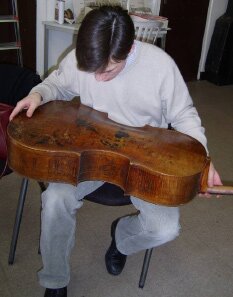Violoncello after “The King”
Cremona, after 1538
by Roland Houël, Mirecourt, 2007
Catalog 69. Violoncello after Andrea Amati by Roland Houël, Mirecourt, 2007
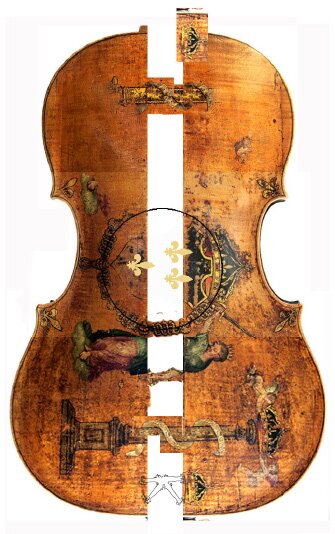 |
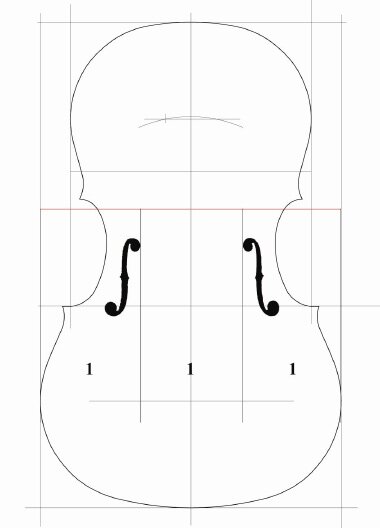 |
| The superimposition of the heraldic emblems and insignia derived from iconographical sources onto the remains of those paintings visible on the back of the cello today. | The derivation of the original design of the body of the violoncello extrapolated from the basic proportions used by Andrea Amati for the construction of his models. |
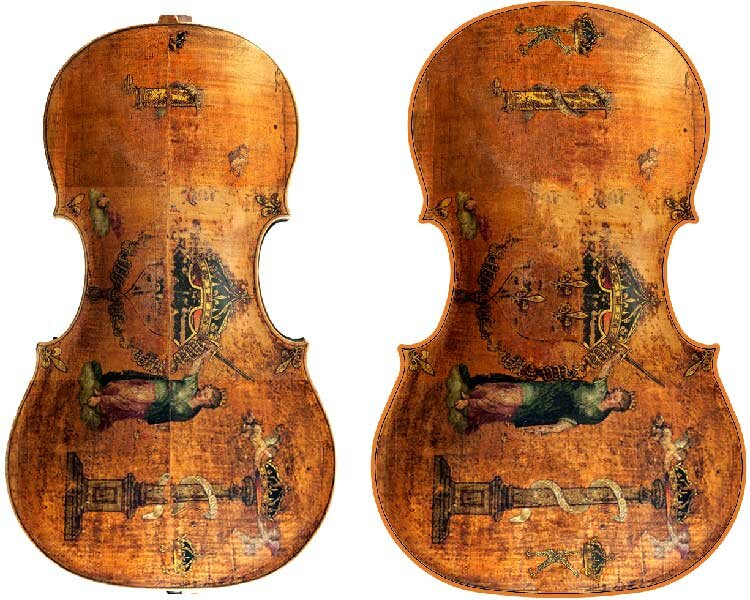
Left: “The King” violoncello by Andrea Amati in the Shrine to Music Museum This instrument has been reduced in size
Right: the projected reconstruction of the original dimensions of that instrument, extrapolated from the methods of geometrical design employed by Andrea Amati and the reconstruction of the figures in the painting on the back of the instrument.

Comparison of the violoncello with the drawing in Syntagma Musicum (1619) by Michael Praetorius
This is an exact reconstruction of the original dimensions of the Andrea Amati violoncello in the Shrine to Music Museum, which suffered an attrocious alteration in size. The scientiific research which this reconstruction entailed may be seen on the television screen next to this instrument: it was presented as a lecture in Cremona in 2006, attended by 200 violin-makers from all over the world at the exhibition dedicated to the works of Andrea Amati
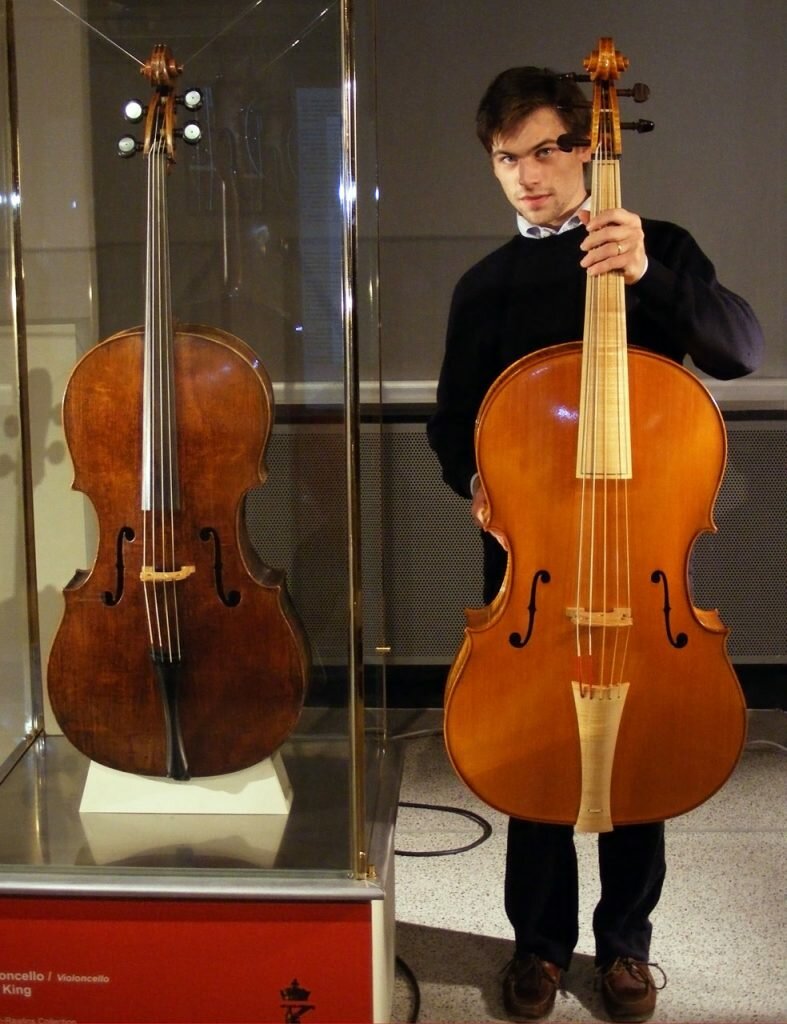 |
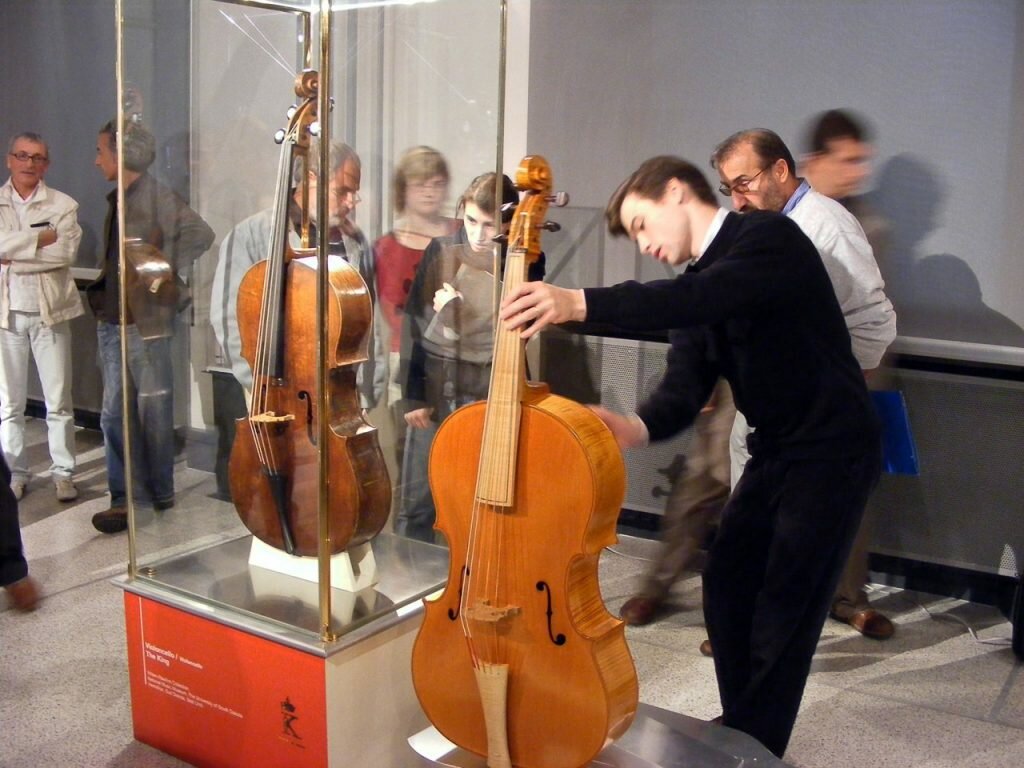 Roland Hoüel during the presentation of his violoncello at the Roland Hoüel during the presentation of his violoncello at theAmati Exhibition in Cremona, October, 2007 |
Stages in the construction of the violoncello.
[Best_Wordpress_Gallery id=”2″ gal_title=”VioloncelloKing”]
Roland Houël examining another original decorated violoncello
by Andrea Amati, at present in Vienna
